Forest Wildlife Management and Conservation
| Author: | LeRoy Humphries |
| Level: | High School |
| Content Area: | Biology, Environmental Science |
| Author: | LeRoy Humphries |
| Level: | High School |
| Content Area: | Biology, Environmental Science |
So how do we harvest forest products? There are various methods for timber harvesting. Some are more noticeable than others. Below are descriptions of some of the more common methods of harvesting timber.
Selective cutting is usually done in an all-aged forest and is designed such that the forest stand continues to grow and produce income. Selections are made based on maturity, size, species, and other factors. There are two goals in this method: 1) to produce an income from the harvest, and 2) to produce a better yield from the stand over time. This method revolves around the forester making well-informed decisions about what trees to cut. This method is particularly suited for use in mixed age and /or mixed species stands of timber.

Shelterwood cutting is usually done in several stages. In the first stage about half of the mature trees are removed while the remaining trees are allowed to produce seeds. They are harvested shortly thereafter. This allows for natural reseeding of the stand and provides some shelter for the new crop of seedlings.

Seed-tree cutting removes nearly all of the trees from a stand of timber. Only a few trees are left to reseed the area. These are the best trees, chosen for their size, quality, and seed-production ability. Once the new crop of seedlings has begun to grow the seed trees are removed so that they don't shade out the new trees. Shade tolerance1 of tree species is a major concern for forest managers. Variation in "shade tolerance" is a key factor underlying forest successional dynamics (i.e. how a forest regrows after a disturbance). Wikipedia gives a list of tree species in relation to shade tolerance. How many of them do you recognize from your area?

Clear cutting is probably the most controversial form of timber harvesting. In this type of harvest, all of the trees on a tract of land are removed. While this is undoubtedly the most efficient and economical method of timber harvest, it leaves large unsightly areas full of stumps. Some argue that this ruins the forest for generations. However, the forest begins to regenerate almost immediately, a process called secondary succession, and within a few short years is providing excellent wildlife habitat and food. Clearcut timbering an area is not the same as deforestation! Whereas a stand of timber that has been clearcut will regenerate within a few short years, an area that is deforested has been permanently converted to another use (e.g. a strip mall, pastureland, or some other sort of development2).

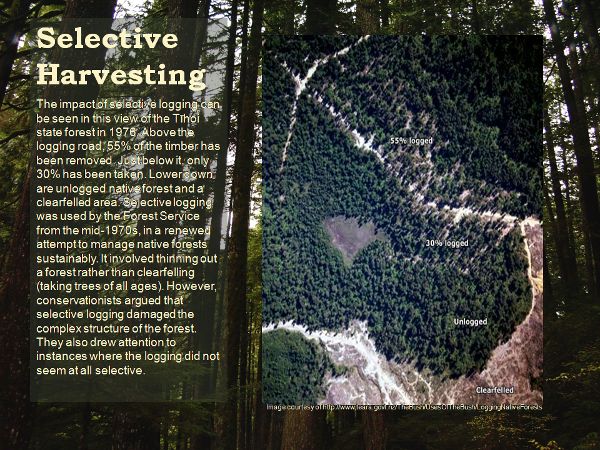
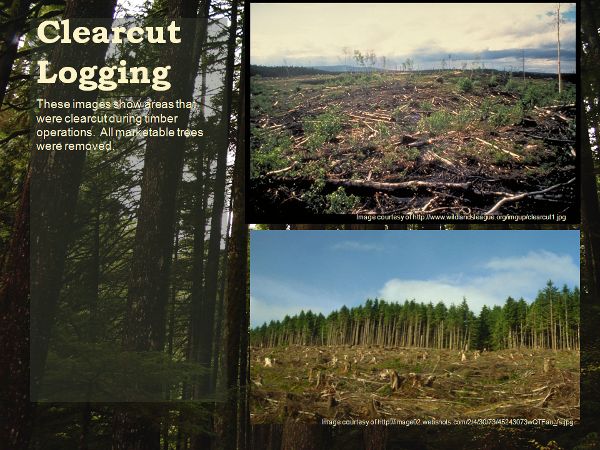
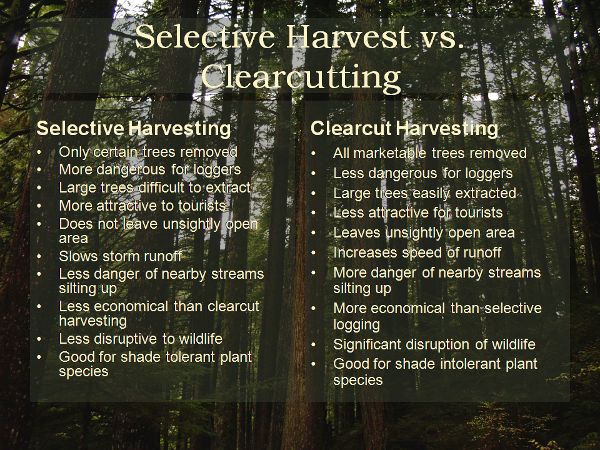
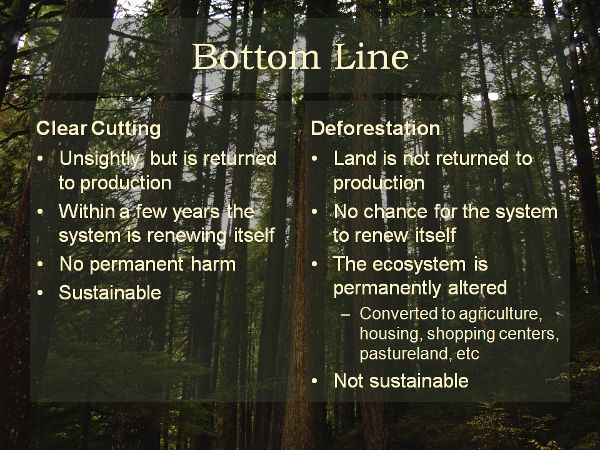
So, the method of harvest depends on many factors, both economics and biological. Each type of harvest has benefits and costs. However, as long as the tract of land is returned to production and not converted to another use, they are sustainable and the forest will regenerate quickly.
Now, lets see how much of that you picked up. Do the activity below and see how you do. As before, remember, no peeking back for answers!
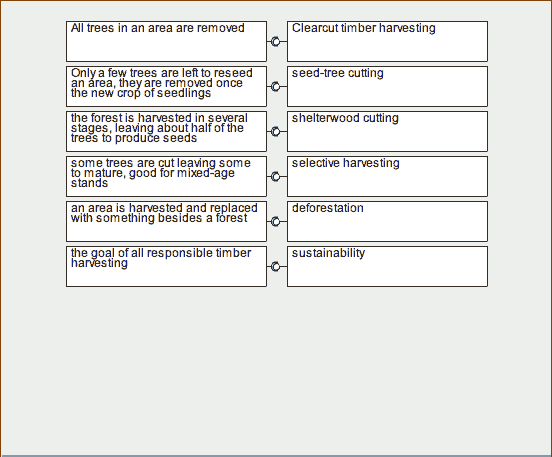
1 In ecology, shade tolerance is a plant's abilities to tolerate low light levels. In forests where rainfall is plentiful and water is not the limiting factor to growth, shade-tolerance is one of the most important factors characterizing tree species. However, different species of trees exhibit different adaptations to shade.
2 Land use conversion from forests to other uses in Brazil, 2000-2005.